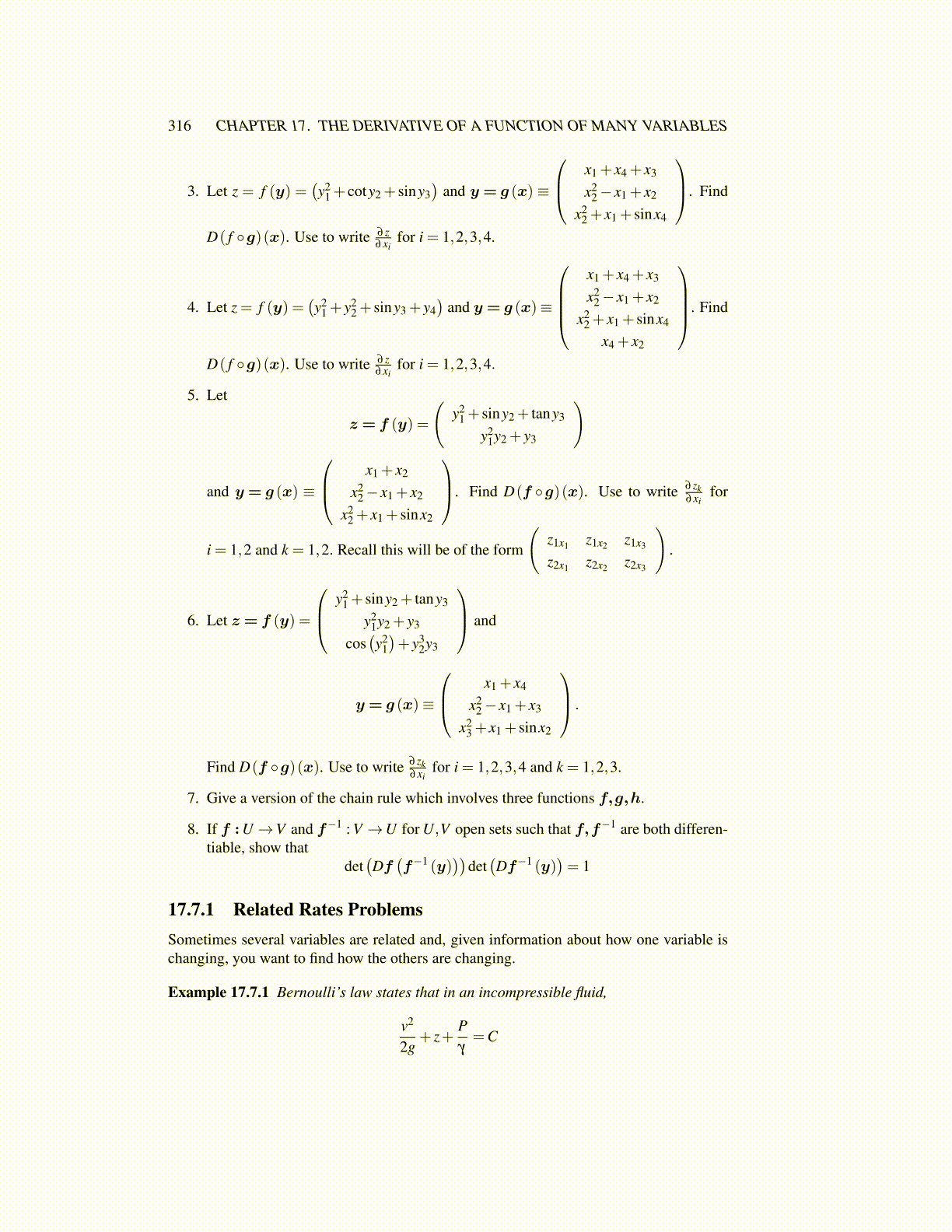
316 CHAPTER 17. THE DERIVATIVE OF A FUNCTION OF MANY VARIABLES
3. Let z = f (y) =(y2
1 + coty2 + siny3)
and y = g (x) ≡
x1 + x4 + x3
x22− x1 + x2
x22 + x1 + sinx4
. Find
D( f ◦g)(x). Use to write ∂ z∂xi
for i = 1,2,3,4.
4. Let z = f (y) =(y2
1 + y22 + siny3 + y4
)and y = g (x)≡
x1 + x4 + x3
x22− x1 + x2
x22 + x1 + sinx4
x4 + x2
. Find
D( f ◦g)(x). Use to write ∂ z∂xi
for i = 1,2,3,4.
5. Let
z = f (y) =
(y2
1 + siny2 + tany3
y21y2 + y3
)
and y = g (x) ≡
x1 + x2
x22− x1 + x2
x22 + x1 + sinx2
. Find D(f ◦g)(x). Use to write ∂ zk∂xi
for
i = 1,2 and k = 1,2. Recall this will be of the form
(z1x1 z1x2 z1x3
z2x1 z2x2 z2x3
).
6. Let z = f (y) =
y21 + siny2 + tany3
y21y2 + y3
cos(y2
1)+ y3
2y3
and
y = g (x)≡
x1 + x4
x22− x1 + x3
x23 + x1 + sinx2
.
Find D(f ◦g)(x). Use to write ∂ zk∂xi
for i = 1,2,3,4 and k = 1,2,3.
7. Give a version of the chain rule which involves three functions f,g,h.
8. If f :U →V and f−1 : V →U for U,V open sets such that f,f−1 are both differen-tiable, show that
det(Df(f−1 (y)
))det(Df−1 (y)
)= 1
17.7.1 Related Rates ProblemsSometimes several variables are related and, given information about how one variable ischanging, you want to find how the others are changing.
Example 17.7.1 Bernoulli’s law states that in an incompressible fluid,
v2
2g+ z+
Pγ=C